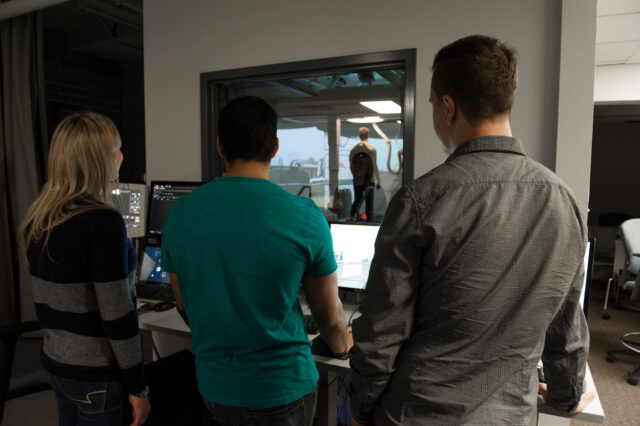Birmingham, T. B., Primeau, C. A., Moyer, R. F., Bryant, D. M., Ma, J., Leitch, K. M., Wirth, W., Degen, R., Getgood, A. M., Litchfield, R. B., Willits, K. R., Eckstein, F., & Giffin, J. R. (2025). High tibial osteotomy for medial compartment knee osteoarthritis. Annals of Internal Medicine. https://doi.org/10.7326/annals-25-00920
Featured Research by Our Clinical Team
We’re proud to share a recently published clinical study conducted by members of our team, featured in the Annals of Internal Medicine. The research explores the effectiveness of medial opening wedge high tibial osteotomy (HTO) for patients with knee osteoarthritis and varus alignment.
Study Abstract
Title: Medial Opening Wedge High Tibial Osteotomy for Medial Compartment Knee Osteoarthritis: A Randomized Controlled Trial
Published in: Annals of Internal Medicine, 2025
Authors: Trevor B. Birmingham, PhD, Codie A. Primeau, PhD, Rebecca F. Moyer, PhD, Dianne M. Bryant, PhD, Jinhui Ma, Phd, Kristyn M. Leitch, PhD, Wolfgang Wirth, PhD, Ryan Degen, MD, Alan M. Getgood, MD, Robert B. Litchfield, MD, Kevin R. Willits, MD, Felix Eckstein, MD, and J. Robert Giffin, MD
Background:
Medial opening wedge high tibial osteotomy (HTO) is a limb realignment surgery that aims to preserve joint structure and improve clinical outcomes by redistributing ambulatory loads on the knee among patients with knee osteoarthritis and varus alignment.
Objective:
To evaluate the efficacy of medial opening wedge HTO.
Design:
Single-center, open-label, assessor-blinded randomized trial with a parallel preference arm. (ClinicalTrials.gov: NCT02003976)
Setting:
Tertiary care center.
Participants:
145 adults with varus alignment and symptomatic knee osteoarthritis primarily involving the medial compartment.
Intervention:
Nonsurgical management plus HTO compared with nonsurgical management alone (control), which included supervised therapeutic exercise for 3 months, nutrition counseling, and acetaminophen or nonsteroidal anti-inflammatory drugs as needed.
Measurements:
The primary outcome was 2-year change in medial tibiofemoral articular cartilage thickness, measured on masked 3-Tesla magnetic resonance images, with a 6.3% loss considered the minimal clinically important difference (MCID). A key secondary outcome was change in the total Knee Injury and Osteoarthritis Outcome Score (KOOS; range, 0 to 100; MCID, 10 points).
Results:
A total of 59 of 71 participants (83%; 30 HTO, 29 control) in the randomized arm and 65 of 74 (88%; 36 HTO, 29 control) in the preference arm were assessed at baseline and 2 years of follow-up. In the randomized arm, the mean 2-year change in medial tibiofemoral articular cartilage thickness was −0.07 mm in the HTO group (a loss of 2%) and −0.25 mm in the control group (a loss of 9%), for a mean between-group difference of 0.18 mm (95% CI, 0.18 to 0.19 mm). The change in total KOOS was 24.95 points in the HTO group and 9.06 points in the control group (mean difference, 15.89 points [CI, 8.94 to 22.84 points]). These outcomes also favored HTO in the preference arm.
Limitation:
Single-center study.
Conclusion:
These results support use of medial opening wedge HTO to slow progression of structural joint damage and improve clinical outcomes among patients with medial compartment knee osteoarthritis and varus alignment.
🔗 Read the full study: https://www.acpjournals.org/doi/10.7326/ANNALS-25-00920

